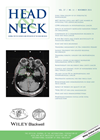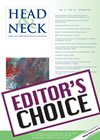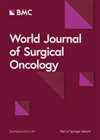Latest Contribution
Risk factors for pharyngocutaneous fistula after laryngectomy
Pharyngocutaneous or salivary fistula is a feared complication following laryngectomy, causing significant morbidity, prolonged hospital inpatient stay / cost and mortality. Previous radiotherapy / chemoradiotherapy is a well recognised risk factor and leads many surgeons to recommend onlay pectoralis major...
Are organ-preserving treatment strategies for T3 laryngeal cancers reducing patient survival?
This article presents the 10-year results of a single institution’s treatment of advanced laryngeal cancer. The institution established a protocol based on the Dutch Head and Neck Society consensus document on laryngeal cancer diagnostics and treatment published in 1991. This...
CT and intraoperative nerve monitoring to identify non-recurrent laryngeal nerve during thyroid surgery
A non-recurrent laryngeal nerve (NRLN) is a rare (incidence 0.3% to 1.3%) anatomical variant that results in a higher rate of vocal cord palsy following thyroid surgery. This team from China examined the utility of preoperative CT and intraoperative nerve...






